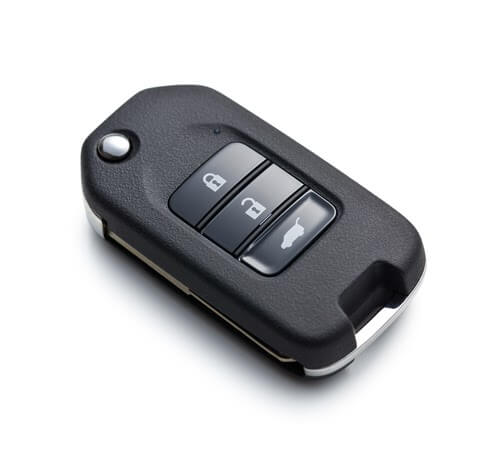If you have a modern car, you may have heard of a transponder key. These keys are becoming increasingly popular and are used to improve the security of your vehicle. In this article, we'll take a closer look at what a transponder key is and how it works.

A transponder key is a type of key that uses radio frequency identification (RFID) technology to communicate with your vehicle. It contains a small microchip that sends a signal to your car's computer when you insert the key into the ignition. This signal is used to verify that the key is authorized to start the vehicle.
When you insert the key into the ignition, a small antenna in the steering column or dashboard of your car detects the signal from the transponder key. The antenna then sends the signal to the car's computer, which verifies that the key is authorized to start the vehicle. If the signal is not received or is not authorized, the car's computer will not allow the engine to start.
One of the biggest advantages of transponder keys is their security features. Because the key must be authorized to start the vehicle, it is much more difficult for thieves to steal your car. Traditional car keys can be easily duplicated, but transponder keys require specialized equipment and programming to create a copy. This makes it much more difficult for someone to steal your car with a duplicate key.
Transponder keys are also designed to be difficult to duplicate. Each key contains a unique code that is programmed into the car's computer. This code is used to verify that the key is authorized to start the vehicle. If someone tries to program a duplicate key without the correct code, the car's computer will not accept it.
In addition to their security features, transponder keys can also be convenient. Many newer cars come with remote keyless entry systems that allow you to lock and unlock the doors with the push of a button. Some transponder keys also have this feature built-in, allowing you to lock and unlock your car without having to insert the key into the door.
In conclusion, a transponder key is a type of key that uses RFID technology to communicate with your car's computer. It contains a microchip that sends a signal to the car's computer when you insert the key into the ignition. This signal is used to verify that the key is authorized to start the vehicle, improving the security of your car. Transponder keys are also designed to be difficult to duplicate and can be convenient for remote keyless entry. If you're in the market for a new car, it's worth considering one that uses a transponder key for added security and convenience.
It's important to note that transponder keys are not just limited to cars. They are also used in other applications where security is important, such as in access control systems for buildings or homes.
One of the key benefits of transponder keys in these applications is that they can be programmed to restrict access to certain areas or at certain times. For example, an employee may have a transponder key that only allows them access to certain areas of a building during specific hours. This can help to improve security and reduce the risk of unauthorized access.
Another benefit of transponder keys is that they can be programmed remotely. This means that if you lose your key or need to add or remove access for someone, it can be done without physically having the key in hand. This can be especially useful in situations where keys are lost or stolen, as it allows for quick and easy changes to access control.
It's also worth noting that transponder keys can be more expensive to replace than traditional keys. This is because they require specialized equipment and programming to create a new key. However, the added security and convenience that they provide can make them a worthwhile investment, especially for high-security applications.
In summary, transponder keys are a type of key that uses RFID technology to communicate with a vehicle or other access control system. They provide improved security by requiring authorization to start the engine or gain access, and can be programmed to restrict access to certain areas or at certain times. While they may be more expensive to replace than traditional keys, their added security and convenience make them a popular choice for many applications.

 Englishen
Englishen











 No.991 Xingxiu Road,Taiwanese Investment Zone, Quanzhou, Fujian Province,P.R.China
No.991 Xingxiu Road,Taiwanese Investment Zone, Quanzhou, Fujian Province,P.R.China +86 13960286508
+86 13960286508
 3D Reality Showroom
3D Reality Showroom
